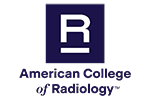Headache
Headaches are common, and most do not require imaging. However, imaging tests are important for headaches that have concerning features.
For adults with sudden-onset severe headache (“thunderclap headache”) that reaches maximal severity within 1 hour, CT head without intravenous (IV) contrast is usually appropriate.
For adults with primary migraines or tension-type headaches and a normal neurologic examination, imaging is usually not appropriate.
For adults with cluster headaches, MRI head without and with IV contrast is usually appropriate.
For adults with headaches likely caused by high pressure around the brain, MRI head without and with contrast, MRI head without contrast, and CT head without contrast are usually appropriate. For adults with headaches likely caused by low pressure around the brain, MRI head without and with contrast is usually appropriate.
For adults with headaches with new onset or pattern during or after pregnancy, MRI head without contrast and CT head without contrast are usually appropriate.
MRI head without and with contrast, MRI head without contrast, and CT head without contrast are usually appropriate for adults with headaches with one of more of the following “red flags”: increasing frequency or severity, fever or neurologic symptoms, history of cancer or of immunocompromise, older age (>50 years) at time of onset, or onset after trauma. For adults with headaches without any of these “red flags” and who do not have sudden-onset (thunderclap) headache, symptoms of low or high brain pressure, or new onset or headache pattern during or after pregnancy, imaging is usually not appropriate.
For more information, see the Headache page.
This page was reviewed on January 24, 2024


